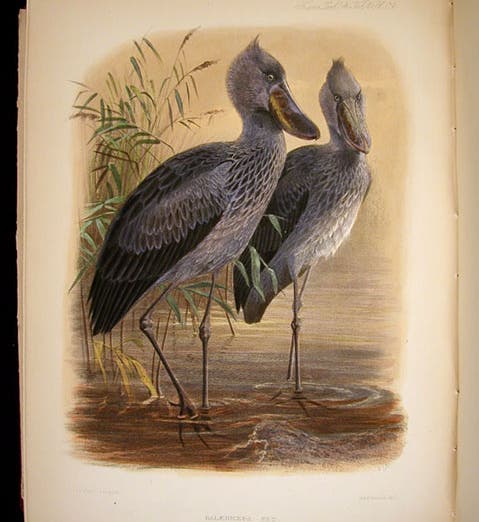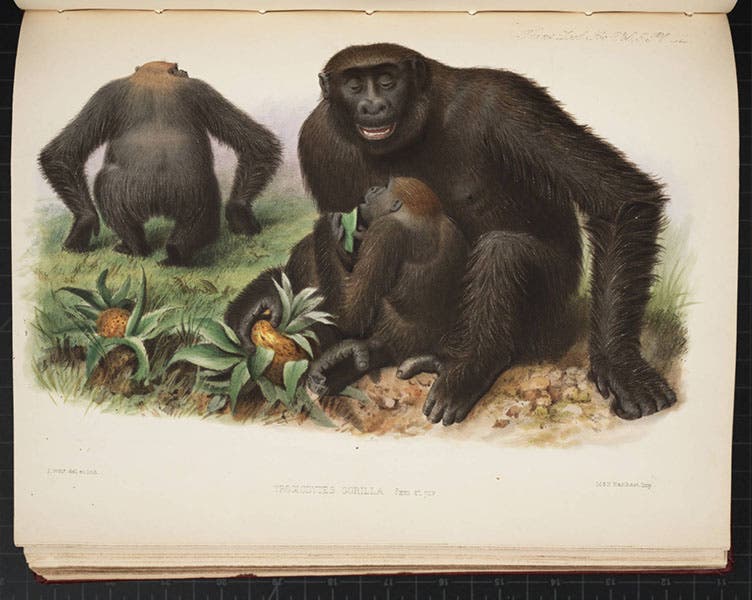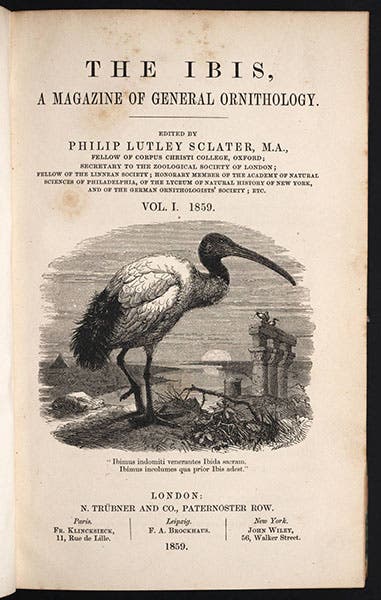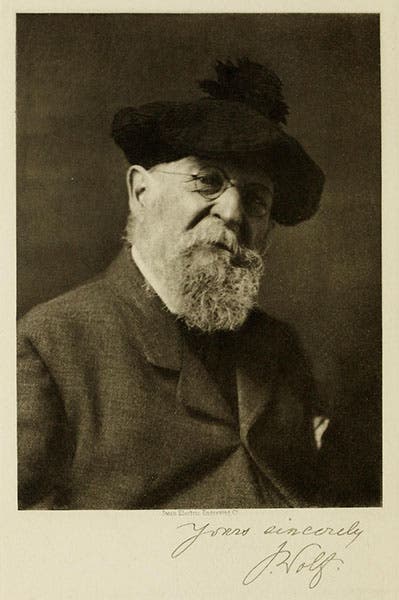Scientist of the Day - Joseph Wolf
Joseph Wolf, a German/English animal artist, was born Jan. 22, 1820. Wolf came to London from his native Germany in 1848 and hooked up with the Zoological Society of London, where for many years he did drawings of London zoo specimens for specialized articles in such journals as the Transactions of the Zoological Society. At that time, the Society had the funds to publish hand-colored lithographs and engravings in its journals, so much of Wolf’s work for them is extremely appealing. His lithograph of the shoebill, for example, Balaeniceps rex, appeared in the Transactions in 1862 to accompany an article by Wlliam Kitchen Parker on the odd African bird. Ever since I first saw it, this has been my all-time favorite animal lithograph, and we used it on the poster of our 2013 exhibition: Crayon and Stone: Science Embraces the Lithograph. The same volume of the Transactions contains Wolf lithographs of a Takahē, a New Zealand flightless bird, for a paper by John Gould, and a marvelous glaring South American owl, for a paper by Philip Lutley Sclater. You can see a detail of the shoebill, and the exhibition poster, at the post we did on Parker, and a Wolf lithograph of another owl at our post on Sclater.
Wolf illustrated several papers by the anatomist Richard Owen. He provided six exquisite sketches of the aye-aye, the strange primate from Madagascar with an elongated middle digit, for a monograph by Owen on the subject in 1863. We show you one of those here, as it was republished in 1866. A post on Tumblr shows the rest of the drawings. Wolf had a way of capturing the facial expressions of animals without making them anthropomorphic; he was often contrasted to John James Audubon in this regard, with Audubon coming off much the worse in the comparison. In 1866, Owen published a piece on gorillas for the Zoological Society Transactions, and Wolf provided a lithograph of a gorilla family for publication. We used this lithograph in our 2012 exhibition, Blade and Bone, where you may see it again, and one other, if you are interested.
One little-known Wolf drawing, unsung because it is unsigned, is a woodcut he did for Sclater. Sclater founded a new journal devoted to ornithology in 1859, and he called it The Ibis. He wanted an ibis to illustrate the front cover, and Wolf provided one, a woodcut. It is a beautiful bird, and it appeared on the cover for a long time, before slipping into the more stylized ibis that later designers preferred.
Wolf died in 1899 and was buried in Highgate Cemetery, joining Mary Ann Evans (George Elliot) and Herbert Spencer. The portrait photograph we show appeared as the frontispiece to an 1895 biography by A.H. Palmer.
Dr. William B. Ashworth, Jr., Consultant for the History of Science, Linda Hall Library and Associate Professor emeritus, Department of History, University of Missouri-Kansas City. Comments or corrections are welcome; please direct to ashworthw@umkc.edu.












